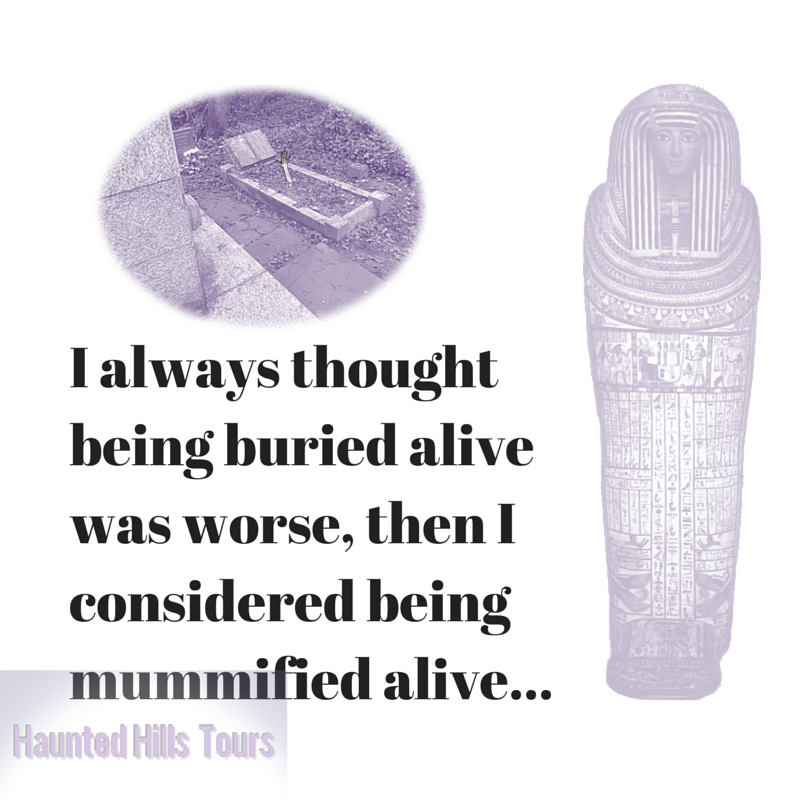Mummified alive?
 200 year old living mummy
200 year old living mummy
The case of the 200 year old Buddhist Mummy declared as living started my synapses firing. Especially since I hadn’t heard of Buddhist mummification before and instantly put into a context I understood – the Egyptian mummification process, with the brains pulled out of the nose, organs scooped out and bottled and body filled with embalming fluids – a process if it had happened to me I wouldn’t want to still be alive at any point in that procedure. This is the point I decided being buried alive was better than being mummified alive.
The process of mummification
With my curiosity at an all time high, I started the process of researching the Buddhist mummification process. The process is called Sokushinbutsu, where the monk abstains from everything except meditation, to become a living Buddha. It’s called a mummy when body doesn’t decompose in an ordinary way, therefore, seen as an incorruptible vessel, a highly revered state by the community. Only 24 preserved living Buddhas have been found, it’s estimated there were more however destroyed through the ages. This was a practice dating back to the 11th century and ending in the 19th century, when Japan banned the practice, and any ritualised/religious suicide.

 Incorruptible vessels (Catholic mummies)
Incorruptible vessels (Catholic mummies)
The idea of incorruptible vessels is not solely the domain of Buddhism, the Catholic church still has Incorruptible vessels on display, like the Buddhist Mummies; their process of decay is different, they omit a fruity smell. The skin also maintains integrity for a long time. St. Nicholas of Tolentino (an incorruptible) has bleed from the arms for 400 years; it’s really odd that the blood continues to flow with the absence of a heart beat and clogging agents that usually win out when the body dies. I’m not sure what prompted anyone to see if St. Nicholas of Tolentino’s blood still flowed.
With the Buddhist mummies, it’s believed that they reached peak enlightenment and move onto a new plane free of their body. This is why they’re considered to still live as their spirit is still on the higher plane. It probably explains why they belief in treating all spirits with compassion especially the ‘hungry ghost’ as it is a suffering soul who hasn’t reached the plane of illumination. With the Catholic ‘Incorruptibles’ it is believed the Spirit has gone on to heaven. An incorruptible will be sainted if they’re not already, although not all Saints require an incorruptible corpse.
Buried alive
Reflecting the idea of incorruptibility and being on display long after death also doesn’t still well with me, especially as to become mummified in the Buddhist culture would have meant dealing with a lot of flies crawling over the body when alive. At least in a coffin, the bugs aren’t going to get you while you’re still alive. In Victoria the early 1900’s people were buried within a day of their death along with death certificates issued. I guess this made storing bodies in a hygienic manner easier given the lack of large cold storage options available especially in rural Victoria. However, it also could have increased the likelihood of being buried alive.
Buddist Mummies



